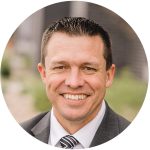This op-ed originally appeared in The Well News on April 18, 2024.
Microschool founders face major problems. One of the biggest: local governments. Overly burdensome regulations dictate where these schools can be located and how they must be built. But Utah just passed a law, a first of its kind in the nation, which reduces those regulations.
Microschools have been around for many years, but grew in popularity during the 2020 school closures. Microschools are small, private schools with student populations ranging from five to 150 students. These schools typically have affordable tuition that is far less than traditional private schools.
Microschool has become a catch-all term to describe the education models that fall between a homeschool co-op and a traditional private school. Other terms for these models include one-room schoolhouse, learning centers and pods. They form to meet the needs of families in their community.
In Moab, a small town in Utah, one microschool was developed to meet the needs of gifted students with learning disabilities.
Utah’s new law eases two of the biggest government problems that microschool founders face: zoning and building occupancy laws. Zoning laws are used by cities to tell builders what kinds of buildings can be in certain parts of the city. It is why you don’t typically find factories in the middle of residential neighborhoods. Building occupancy regulations are the laws that direct how those buildings should be constructed. Unfortunately, microschool founders get the worst of both of these laws.
First, microschools are usually placed in commercial zones, which are typically near a busy highway or in a strip mall (the available commercial properties). Once there, these innovators are forced to upgrade their building to meet the strict school construction rules. Some of these rules make sense, like a school-grade fire detection system. But others don’t. Does a school of 20 students really need four bathrooms?
Ian Lindsey, founder of the Acton Academy St. George estimates that he spent over $500,000 establishing his school. When establishing a new and innovative school, there is a lot of red tape.
First, a founder will have to find a location that fits within a city’s zoning rules. If they can’t find a location, a founder may have to get a city to change their zoning. They will then have to apply for conditional use permits, which require a lot of inspections, money and time. During the permitting process, the founder will likely have to upgrade their building to change the occupancy type. The landlord may not allow the occupancy change if the founder is leasing the building, which would start the whole process over. All of this needs to take place before the founder can begin teaching children.
Utah’s new law helps in two really impactful ways.
First, the law permits microschools in all zones across the state. These are the same rules for public and charter schools in Utah. No longer will microschools be relegated to commercial parts of town. Now they can form in the neighborhoods of the students they are trying to serve.
Second, and perhaps more importantly, the law reduces the building occupancy laws. Because of their small size, microschools can be in a commercial-grade building instead of the stricter school-grade building. This makes a lot of sense for founders. Often, these schools are working with groups of students similar in size to businesses like tutoring centers, dance studios or karate dojos. Allowing them to meet in similarly constructed buildings makes a lot of sense.
As the microschool movement grows across the country, more and more founders will run into similar problems. States and cities need to consider viable solutions to ease the burdens their outdated zoning and occupancy laws put on education entrepreneurs.
One microschool founder said it best, “One thing is clear — whether we are developing solutions for affordable housing or education — it is unrealistic to expect one approach to solve all needs. A healthy forest has a variety of trees.”
Changing outdated zoning and occupancy laws preps the education soil for that variety.

